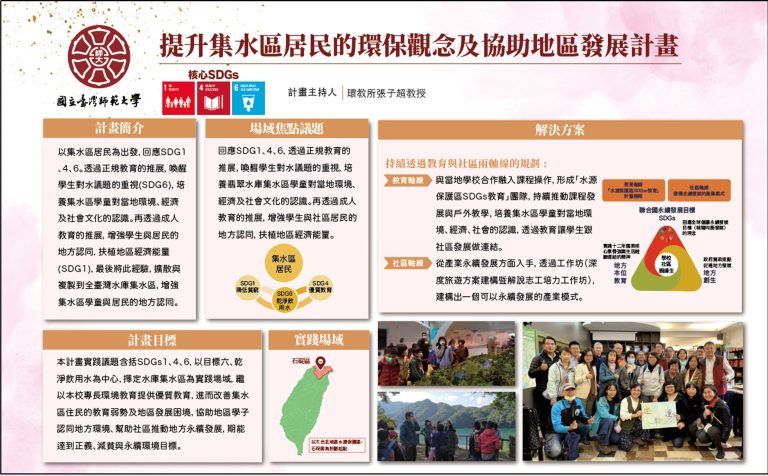2024 SDG 14 English
- 14.2.1 Fresh-water ecosystems (community outreach)
- 14.2.2 Sustainable fisheries (community outreach)
- 14.2.3 Overfishing (community outreach)
- 14.3.1 Conservation and sustainable utilisation of the oceans (events)
- 14.3.2 Food from aquatic ecosystems (policies)
- 14.3.3 Maintain ecosystems and their biodiversity (direct work)
- 14.3.4 Technologies towards aquatic ecosystem damage prevention (direct work)
- 14.4.1 Water discharge guidelines and standards
- 14.4.2 Action plan to reducing plastic waste
- 14.4.3 Reducing marine pollution (policy)
- 14.5.1 Minimizing alteration of aquatic ecosystems (plan)
- 14.5.2 Monitoring the health of aquatic ecosystems
- 14.5.3 Programmes towards good aquatic stewardship practices
- 14.5.4 Collaboration for shared aquatic ecosystems
- 14.5.5 Watershed management strategy
14.2.1 Fresh-water ecosystems (community outreach)
NTNU has implemented the Ministry of Education’s “National Elementary and Secondary Schools Integrated with Community Sustainable Development Program” four years from 2019 to 2023. By organizing the “Workshop for Learning Together,” “Walking Workshops,” “Workshops for Working Together,” “On-site Counseling and Collaboration,” “Sharing the Results of the Program,” and “Effectiveness Evaluation Meetings,” the University helps the participating schools to link up with the local water resources, the community, and the government to develop school-based curricula that feature water resources and local cultures. The program helps the participating schools to create school-based curricula featuring water resources and local culture through cross-disciplinary cooperation.
For example, the school assisted Yue Ming Elementary School in Yilan in completing the education on food farming, which began with friendly rice farming, and then combined it with fish education for school nutritional lunches. Through guidance, the school led the students to practice caring for the social environment, cooperated with eco-chefs, and used traditional dietary elements combined with friendly and healthy ingredients to serve tables for the community’s elders, and cooperated with the surrounding schools to carry out a tern restoration education program.
Taichung Tbulan Elementary School is located on the banks of the Dajia River, serving as its unique curriculum’s central axis. In line with the 12-year national curriculum, the school integrates the original “traditional Atayal culture and ecological wisdom” into the school’s customized curriculum, incorporating “conservation,” “disaster prevention,” “culture,” “economy,” “ecology,” “arts and literature,” “wisdom,” and “forests” into the development of the “TMALI” program and the “TMALI” program, along with the traditional Atayal fishing and hunting culture and disaster prevention and wisdom of the local Devlans. Through “study tours,” “experiential exploration,” and “action learning,” the program aims to lead students to a deeper understanding of the value of local characteristics in the mountains and waters of the region, to develop regional marketing plans, and to change students’ attitudes toward life and bring them closer to the relationship between people and water in nature.
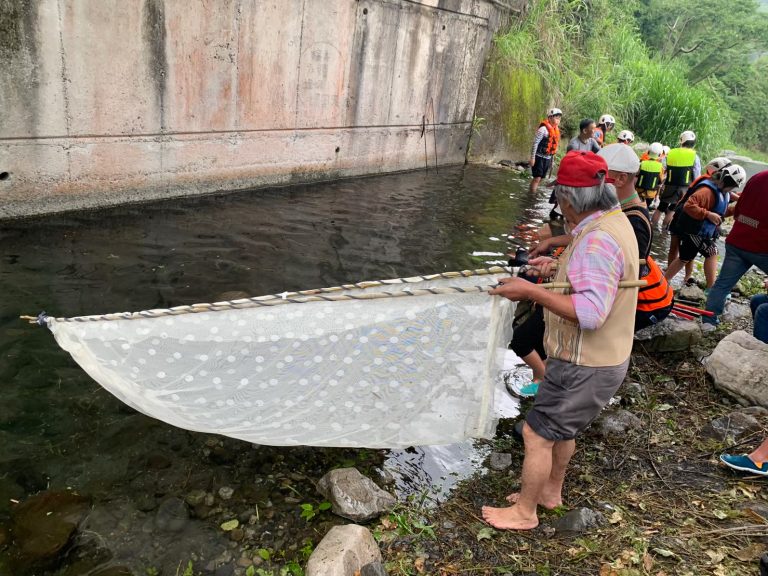
14.2.2 Sustainable fisheries (community outreach)
The NTNU implemented the “National Elementary and Secondary Schools Integrated with Community Sustainable Development Program” to enhance school education in non-metropolitan areas, with school education as the mainstay and the development of school-based curricula to allow education to be deeply rooted in the local community, and at the same time incorporate the concept of locality-based education, i.e., through the development of locality-based education curricula and activities in schools, overall planning, local industries, community organizations, and returning youths…etc. Establish partnerships and facilitate the connection between fishery, aquaculture, and tourism industries.
For example, due to environmental changes, population exodus, and childlessness at Linbian Elementary School in Pingtung County, the aquaculture industry has been seriously affected by the changes in the environment, and the development of the “Sustainable Fish Township – Learning to Fish and Play in the Water” program, which is a cooperative effort between local aquaculture and fishery industries and local youth, and which provides educational tours so visitors can learn about the development of the local cultural and historical sectors. Kouhu Junior High School in Yunlin County connects the community through education, unites the centripetal force of the community, and responds to community and local issues to cultivate relevant talents so that the community and the school can work together towards a better life and a sustainable future. Kouhu Junior High School in Yunlin County, based on environmental issues such as the subsidence of the earth’s strata, the disappearance of aquaculture fisheries, seawater back-up, and the ecology of the wetlands, it executes the Jackie Chan Wetland Course with [New Vision for a Sustainable Kouhu] to achieve the goal of allowing students to have a sense of responsibility and mission for the fisheries resources through the students’ visits to the community to investigate and promote the activities of the Sustainable Table to promote the story of aquaculture for the local industries, including fish, shrimp, and shellfish, to more visitors.

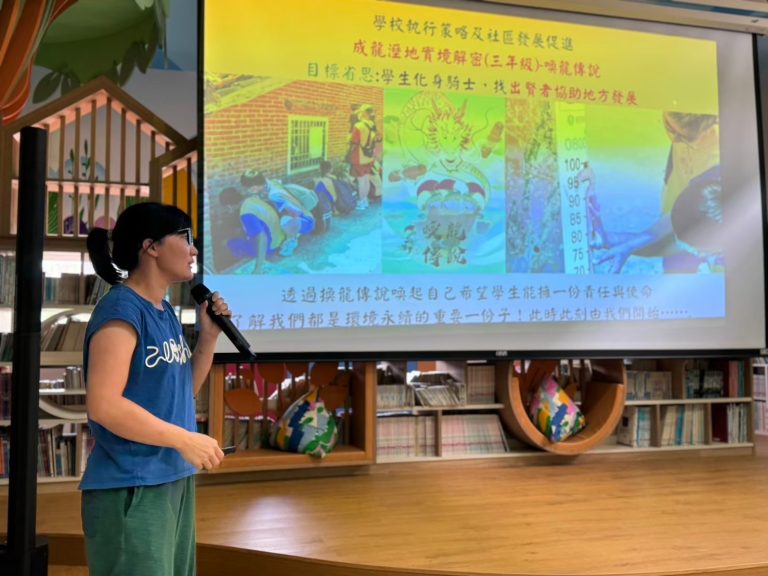
14.2.3 Overfishing (community outreach)
The University has implemented the “National Elementary and Secondary Schools Integrated with Community Sustainable Development Program” to integrate local life, production, and ecological practices into the school-based curricula. The project addresses local marine resource issues, allowing students to understand the changes and causes in fisheries and reflect on the interaction between the ocean and the community, providing knowledge, innovation, and solutions for local sustainable development. For example, Yehliu Elementary School promotes a sustainable marine curriculum from the dining table to the community by introducing “Marine Food Education.” They work with local restaurants to promote the “Fish Consumption Traffic Light” board game, which helps people distinguish whether marine resources are overfished or sustainable. Seasonal green-light seafood, such as mackerel, squid, beltfish, and clams, indicates sustainable choices, while red-light species indicate those at risk of depletion and should be avoided. This concept is further expanded to community seafood restaurants, encouraging the public to select sustainable seafood.
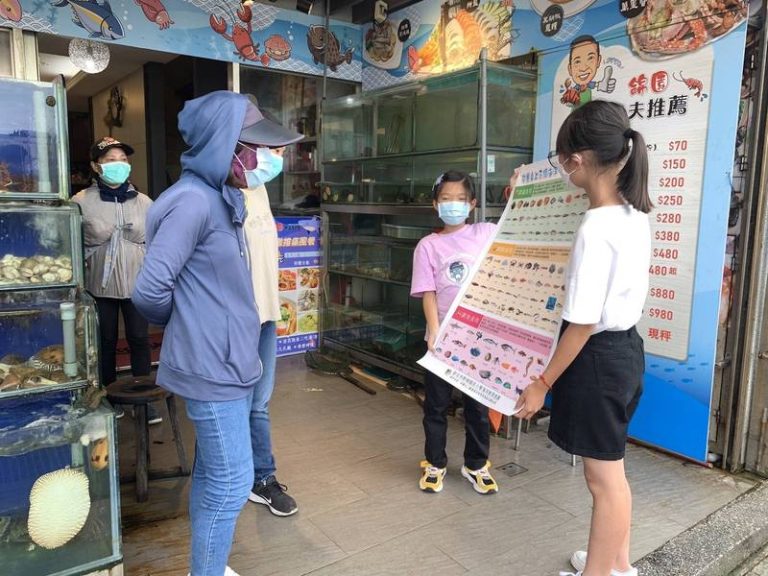
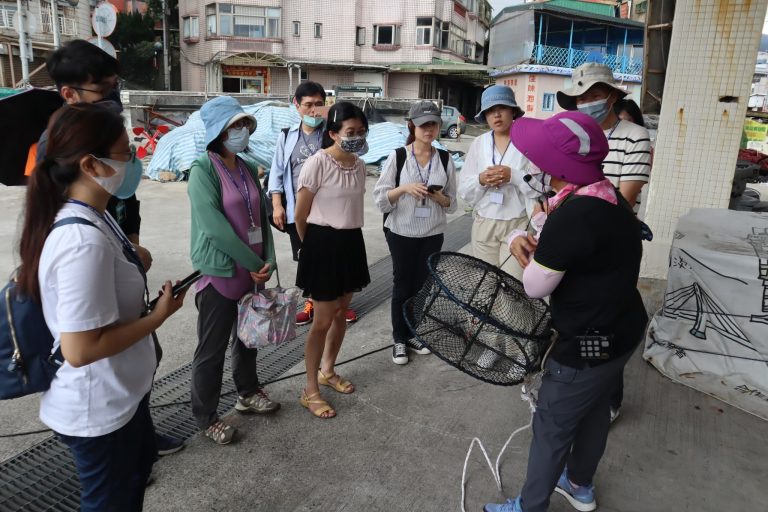
14.3.1 Conservation and sustainable utilisation of the oceans (events)
The NTNU research team investigates the scope of global marine microplastic pollution and its implications on aquatic ecosystems and human health. It first delves into how plastic enters the ocean, emphasizing the accumulation of plastic along coastlines, particularly the formation and impact of the Great Pacific Garbage Patch (GPGP). A concentration map of marine microplastics across five continents reveals the global distribution of microplastic pollution. Furthermore, the effects of microplastics on marine wildlife are explored, as well as their potential entry into the human food chain, posing potential public health risks. The research results underscore the severe threats of microplastic pollution to global marine ecosystems and human health, emphasizing the need for more scientific research and policy measures to address this challenge. The paper has been published in the internationally renowned journal “Sustainability” in September 2023.
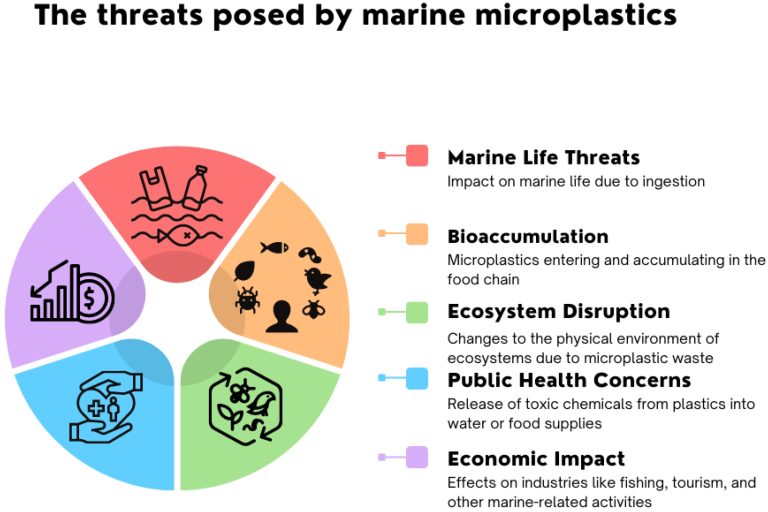
14.3.2 Food from aquatic ecosystems (policies)
NTNU dietary hygiene management in food and beverage hygiene management explicitly regulates the use of food ingredients must comply with the “Food Safety and Hygiene Management Law,” “School Health Law,” “Food Administration Law,” and “Agricultural Products Production and Certification Management Law” and other relevant laws and regulations to ensure that the source of food is legal and hygienic. In addition, priority should be given to using agricultural products with traceability systems promoted by the central agricultural authorities. These products have barcode labels for farming, livestock, and aquatic products, which can effectively increase the transparency of food products and allow consumers to trace their production processes, further enhancing food safety. This not only protects the health of students and teachers but also encourages the development of local agriculture and promotes sustainable agriculture.
14.3.3 Maintain ecosystems and their biodiversity (direct work)
1. Professor Lu Guangyang, an honorary professor in the Department of Life Sciences at NTNU, known as the “Father of the Taiwan Salamander,” has dedicated over 30 years to researching salamanders. The ecological documentary “The Salamander is Coming” was created to save the endangered Taiwan salamander, facing a survival crisis due to environmental degradation and climate change. Filmed over 17 years, it documents the efforts of students and researchers of the NTNU. The film captures their journeys through mountains and streams, telling the stories and experiences of the salamanders, showcasing the challenges of field surveys, and providing rich research information from data analysis in the laboratory. It also unveils the mysteries of the nearly extinct salamander. The research team has published findings on two new species of salamanders, the Guanwu and Nanhu, which have been internationally recognized. This not only enhances public awareness of Taiwan’s native amphibians but also promotes the development of ecology and local biology, encouraging more people to understand and pay attention to Taiwan’s ecological diversity.
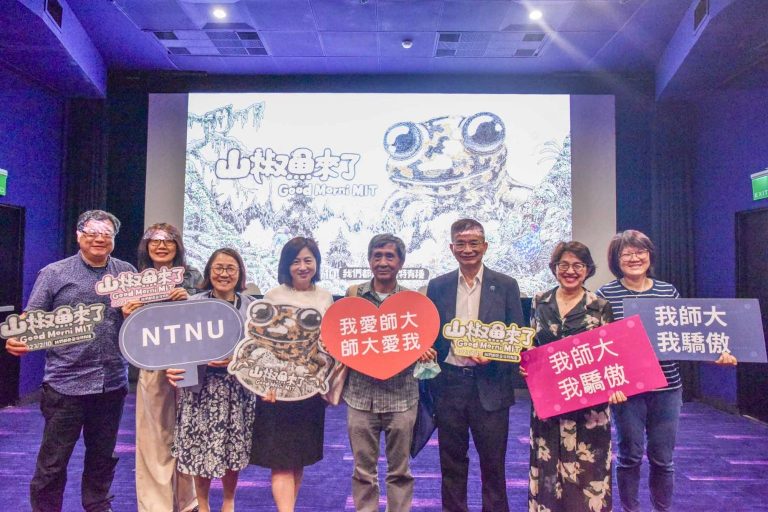
2. 「Taiwan’s Wetland Ecosystem under the United Nations Sustainable Development Goals」 was co-produced by Dr. Fang Weida and international director Feng Zhenlong. Four episodes of this environmental program, produced by the Asia Chairman of the Society of Wetland Scientists and the Chairman of the Taiwan Wetland Society, showcase the beauty, diversified types, and importance of Taiwan’s wetlands. Addressing climate change and human impact, the film features rare footage of protected animals like the crab-eating mongoose. The marketing trailer has won awards from the East Asia Center of the United Nations Ramsar Convention on Wetlands and the International Society of Wetland Scientists Asia Committee, receiving the “Best of Best Award.”
14.3.4 Technologies towards aquatic ecosystem damage prevention (direct work)
NTNU’s “Prospective Governance Plan for Shallow Mountain Ecosystem Services: An Example from the Shangping River Basin in Hsinchu County” discusses eight topics, using the Shangping River Basin in Hsinchu County as a case study:
1. Water Politics and Governance: The Boundaries of Ecosystem Services in the Shangping Creek Watershed.
2. Establishing Hydrological and Non-Point Source Pollution Models in the Shangping Creek Watershed to Assess the Impact of Climate Change and Human Activities on River Water Quantity and Quality.
3. Evaluation of Vertical Wetland Ecological Information Auditing and Sediment Flux Models under the Circular Economy.
4. Research on the Linkage between Slope Ecology Conservation, Water Resource Supply, and Industrial Development in Science Parks under a Risk Society.
5. Ecosystem Services and Environmental Sustainability Planning for the Shangping Creek Watershed in the Baoshan Reservoir.
6. Research on Ecosystem Services in Agricultural and Rural Development in the Shangping Creek Watershed.
7. Exploring Ecosystem Services in Small Watersheds Amidst Social Changes: The Evolution of Cultural Ecosystem Services in Hsinchu Science Park.
8. Visualization of Ecosystem Services and Promotion of Environmental Education: Creating Ecological Topography Feature Maps.
14.4.1 Water discharge guidelines and standards
Wastewater generated on our campus is transported to city sewage treatment plant through city sewerage piping system and treated to meet discharge standards before discharge or recycling to avoid water pollution.
To ensure the sustainable use of water resources, the University has formulated the “Principles for the Management of Hazardous Wastes in Laboratories” and implemented strategies such as innovative water conservation and water recycling to enhance the efficiency and safety of water resources. First, the Environmental Safety and Health Center was established to manage hazardous waste in laboratories. From the classification, storage, and labeling of hazardous waste to the maintenance and management of storage sites to outsourced transportation, publicity, and reporting, all are handled by the Ministry of the Environment’s waste cleanup laws and regulations to ensure that hazardous waste, such as laboratory waste liquids is dealt with appropriately.
14.4.2 Action plan to reducing plastic waste
1. The Sustainable Development Center has organized the “Love RE Cups” event for three consecutive years. During the first-year orientation and club fair, the center set up a dedicated booth to promote zero waste on campus. It emphasizes the 5R principles: Refuse, Reduce, Repair, Recycle, and Reuse. The initiative commits to reducing the use of 100 disposable beverage cups. Students who complete the sustainability literacy survey will receive a reusable cup, aiming to reduce plastic waste.
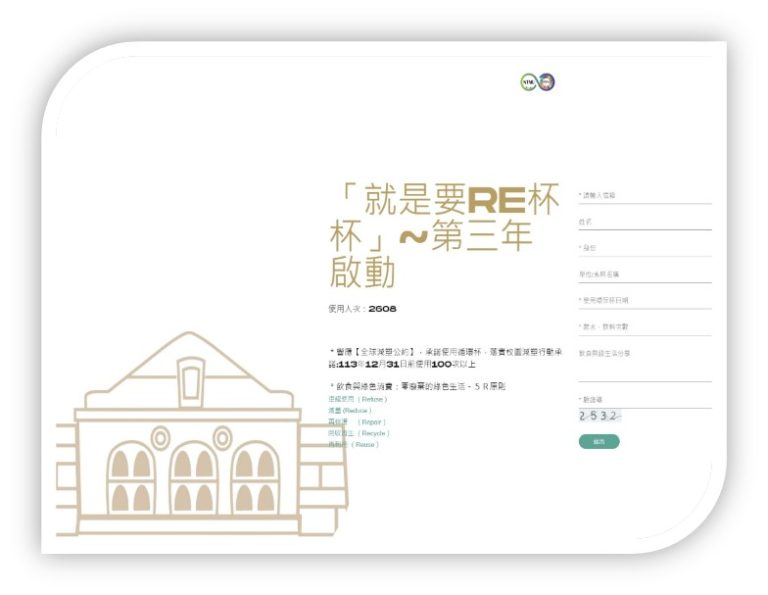
2. In 2017, NTNU established the “Plastic Reduction and Sustainable Consumption Promotion Center” to reduce plastic waste through action plans. The center continuously promotes plastic reduction activities via its Facebook fan page, including using uncoated paper for promotional materials, choosing eco-friendly materials for posters, digitizing certificates for competitions, and collaborating with manufacturers and various environmental groups to promote nationwide plastic reduction education.
14.4.3 Reducing marine pollution (policy)
Plastics have been the most serious pollutant of the ocean pollution. In 2022, NTNU formulated the“Taiwan Normal University Campus Plastic Reduction Protocol”, to ban or reduce the use of plastics and disposable items for each unit when holding meetings and reducing plastic in the office. Disposable items include disposable chopsticks and plastic spoons. and disposable plastic food containers, etc.
Additionally, NTNU established the“National Taiwan Normal University Implementation Principles for Reducing the Use of Disposable Tableware and Packaged Drinking Water.”This initiative promotes waste reduction at the source, reduces resource consumption, and curbs waste generation.
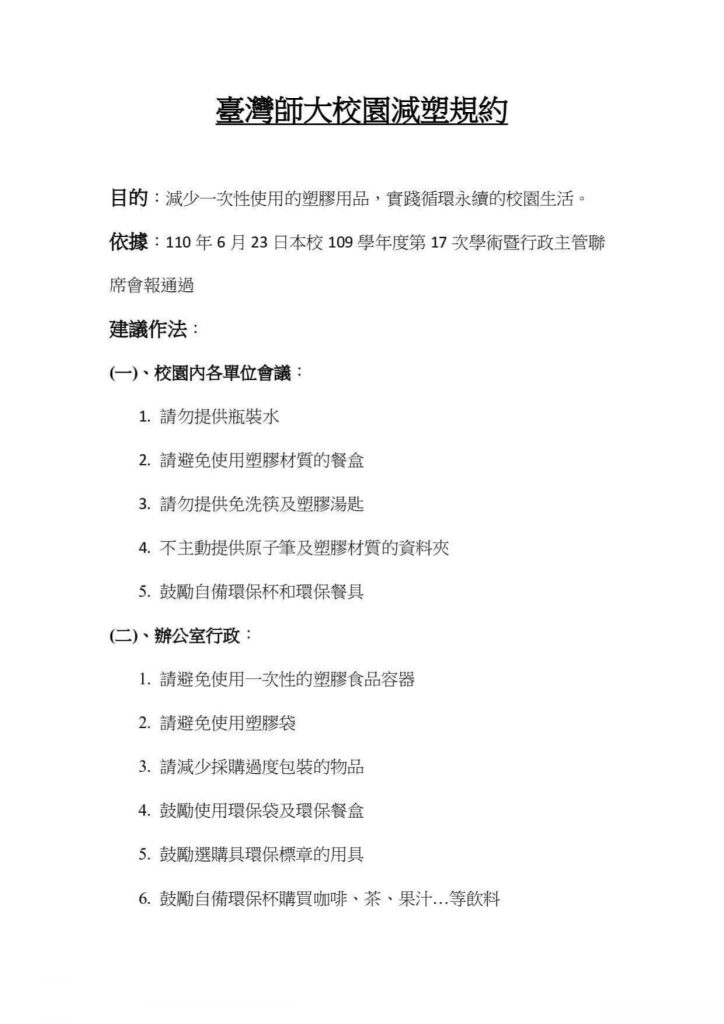
14.5.1 Minimizing alteration of aquatic ecosystems (plan)
In marine ecological research, the University has studied sea birds, mammals, fish, and algae and monitored the health of aquatic ecosystems to explore the impact of human factors on climate change, marine ecology, and marine resources, as well as propose response strategies. For example, research on the relationship among the Zhejiang upwelling in the East China Sea, phytoplankton blooms, and hypoxia phenomena shows that surface fish experience hypoxia or low oxygen conditions, accompanied by the regeneration of high concentrations of nitrates and phosphates. As the phytoplankton blooms dissipate, their decomposition products may further exacerbate hypoxia. When “hypoxia,” “phytoplankton blooms,” and “upwelling” co-occur, the impact of upwelling on blooms and hypoxia is assessed.
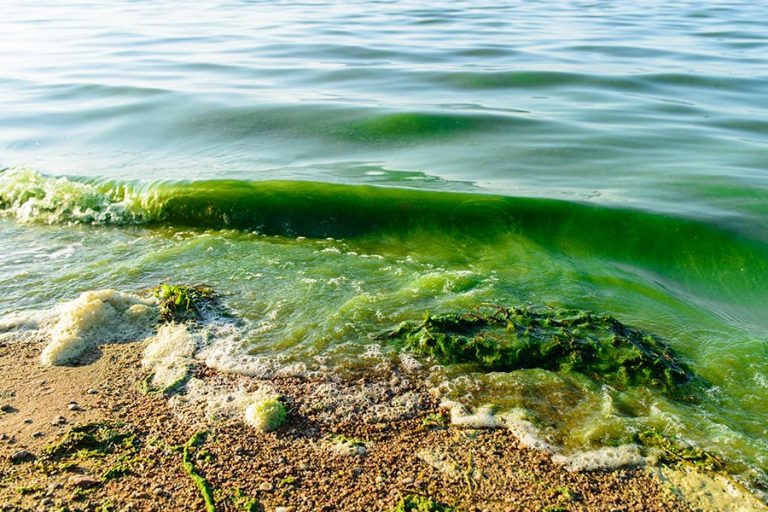
14.5.2 Monitoring the health of aquatic ecosystems
Taiwan’s aquatic ecosystems face challenges from climate change, overfishing, and pollution. To address these issues, Professor Lin Deng-Qiu has been leading the National Science Council’s “Long-term Social-Ecological Research (LTSER)” program from 2021 to 2024. This program focuses on long-term research and linking ecosystems with social systems. The “Taiwan Long-term Social-Ecological Core Observatory” has four core observatories in Green Island, Feicui, Changhua, and Hualien.
The Hualien station monitors ecological services and socio-economic changes in Fenglin and Guangfu Townships from four perspectives: atmospheric factors, biodiversity, land use changes, and social systems. This monitoring aims to understand the impacts of climate change, government policies, and land use changes on the region’s social-ecological systems.
The Changhua station monitors benthic organisms (crabs) and water quality and integrates air quality data from the Environmental Protection Administration and meteorological data from the Central Weather Bureau. Green Island, influenced by the Kuroshio Current, has a rich coral reef ecosystem that supports fishing and tourism activities.
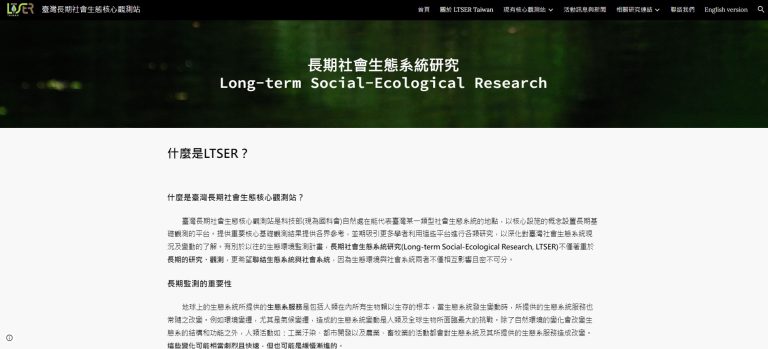
14.5.3 Programmes towards good aquatic stewardship practices
The Graduate Institute of Environmental Education and Sustainable Management has long supported and encouraged students to form the ECO Group. This group is responsible for maintaining and managing the artificial wetland at the Gongguan campus, including removing invasive species and conducting ecological surveys. In recent years, the ECO Group has collaborated with counselors from middle schools in the Greater Taipei area (such as Xihu Experimental Middle School, Zhishan Junior High School, and Jingxing Junior High School) to lead high-risk students in environmental education courses at the artificial wetland. The course topics include seed dispersal methods, animals in Taiwanese place names, tracking animal traces, and wetland discoveries. Students learn about ecology and wetlands and wear waders to enter the wetland for ecological observations and to assist in removing invasive species.
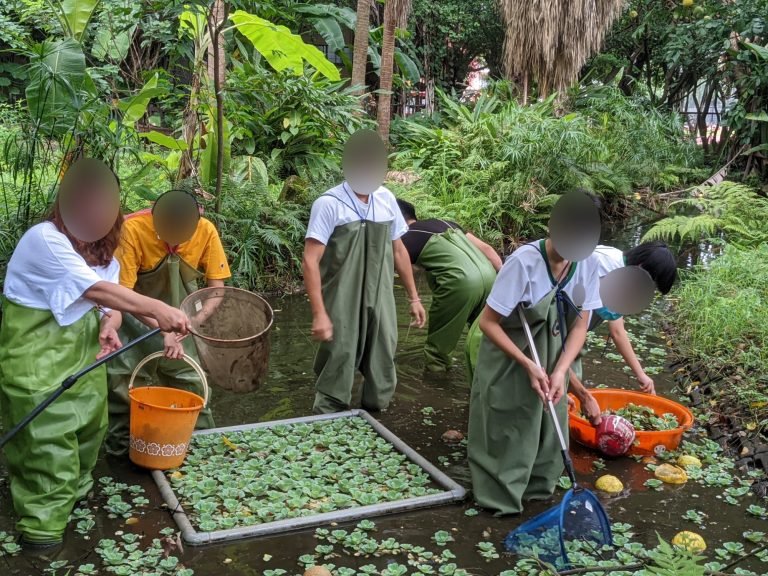
14.5.4 Collaboration for shared aquatic ecosystems
1. “Protection and Sustainable Use of the Oceans” is a global issue. Students can enhance their awareness of marine environmental protection by participating in international internship programs. Through the Ministry of Education’s “Dream-Building Internship Program,” students join international non-profit organizations for marine mammal observer training. They travel to the Azores in Portugal to explore whale and dolphin behavior. During the two-month field observation, students better understand marine ecosystems. At the research station, they collaborate with international students to process marine observation data and learn how to transform observation results into scientific data, making it a valuable cooperative learning experience.

2. Dr. Wei-Da Fang, Director of the Graduate Institute of Environmental Education and Sustainable Management, is the first Asian to receive the Leadership Service Award from the Society of Wetland Scientists. In 2023, he was awarded the “112th Environmental Protection Third-Class Professional Medal” by the Environmental Protection Administration of the Executive Yuan. He organized the SWS Asia Conference and convened the Asian Conference at the Ramsar East Asia Center in Korea in 2019 and 2023. The 2019 conference earned him the only Professional Wetland Scientist (PWS) certificate in Asia from the American Society. As an observer on the Ramsar Convention’s Scientific and Technical Review Panel, he was the sole representative from Asia. Through international exchanges and technical support, he has enhanced Taiwan’s knowledge and techniques in wetland restoration, promoting international cooperation in aquatic ecosystem conservation.
14.5.5 Watershed management strategy
From 2022 to 2024, the University has implemented the Higher Education Sprout Project’s USR Hub (University Social Responsibility) program titled “Enhancing Environmental Awareness and Assisting Regional Development for Watershed Residents.” This project focuses on clean drinking water and selects the implementation site of the Taipei Water Source Protection Area. It aims to provide quality education to improve watershed residents’ educational disadvantages and poor development challenges. It assists local students in recognizing their environment and helps the community promote sustainable development, striving to achieve the goals of justice, poverty reduction, and a sustainable environment.
The project aims to enhance watershed residents’ local identity and well-being, addressing SDGs 1, 4, 6, and 14. Promoting formal education raises students’ awareness of water issues (SDG 6) and cultivates their understanding of the local environment, economy, and sociocultural aspects. Additionally, by promoting adult education, the project strengthens the local identity of students and residents and fosters regional economic vitality (SDG 1).
